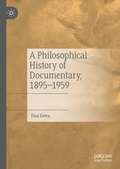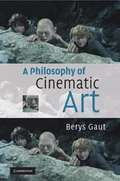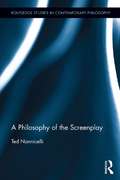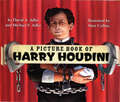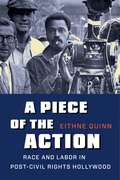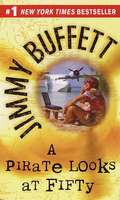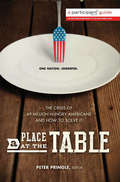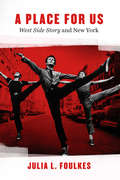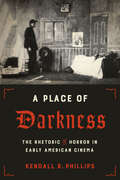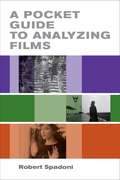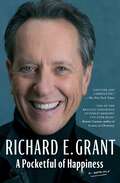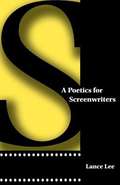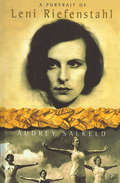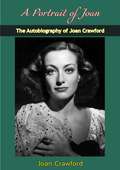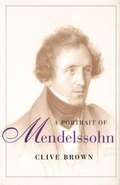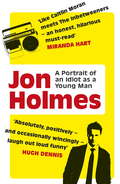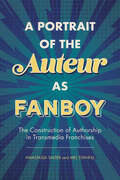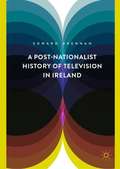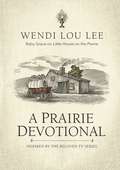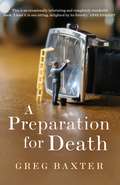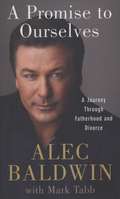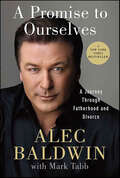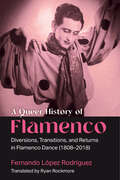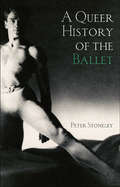- Table View
- List View
A Philosophical History of Documentary, 1895–1959
by Dan GevaThis book presents a chronology of thirty definitions attributed to the word, term, phrase, and concept of “documentary” between the years 1895 and 1959. The book dedicates one chapter to each of the thirty definitions, scrutinizing their idiosyncratic language games from close range while focusing on their historical roots and concealed philosophical sources of inspiration. Dan Geva's principal argument is twofold: first, that each definition is an original ethical premise of documentary; and second, that only the structured assemblage of the entire set of definitions successfully depicts the true ethical nature of documentary insofar as we agree to consider its philosophical history as a reflective object of thought in a perpetual state of being-self-defined: an ethics sui generis.
A Philosophy of Cinematic Art
by Berys GautA Philosophy of Cinematic Art is a systematic study of cinema as an art form, showing how the medium conditions fundamental features of cinematic artworks. It discusses the status of cinema as an art form, whether there is a language of film, realism in cinema, cinematic authorship, intentionalist and constructivist theories of interpretation, cinematic narration, the role of emotions in responses to films, the possibility of identification with characters, and the nature of the cinematic medium. Groundbreaking in its coverage of a wide range of contemporary cinematic media, it analyses not only traditional photographic films, but also digital cinema, and a variety of interactive cinematic works, including videogames. Written in a clear and accessible style, the book examines the work of leading film theorists and philosophers of film, and develops a powerful framework with which to think about cinema as an art.
A Philosophy of the Screenplay (Routledge Studies in Contemporary Philosophy)
by Ted NannicelliRecently, scholars in a variety of disciplines—including philosophy, film and media studies, and literary studies—have become interested in the aesthetics, definition, and ontology of the screenplay. To this end, this volume addresses the fundamental philosophical questions about the nature of the screenplay: What is a screenplay? Is the screenplay art—more specifically, literature? What kind of a thing is a screenplay? Nannicelli argues that the screenplay is a kind of artefact; as such, its boundaries are determined collectively by screenwriters, and its ontological nature is determined collectively by both writers and readers of screenplays. Any plausible philosophical account of the screenplay must be strictly constrained by our collective creative and appreciative practices, and must recognize that those practices indicate that at least some screenplays are artworks.
A Picture Book of Harry Houdini (Picture Book Biography)
by David A. Adler Michael S. AdlerHarry Houdini astounded audiences around the globe with his death-defying acts and illusions. With his wife, Bess, often by his side, he freed himself from ropes, handcuffs, straitjackets, and prison cells. Once he even made a ten-thousand-pound elephant vanish into thin air! Yet Harry's life was not always so glamorous. When he was a boy, he shined shoes and did odd jobs to help make ends meet. But a career in magic was always in the cards for Harry. Readers will be mesmerized by this captivating biography of one of the most celebrated escape artists and magicians in history.
A Piece of the Action: Race and Labor in Post–Civil Rights Hollywood
by Eithne QuinnHollywood is often thought of—and certainly by Hollywood itself—as a progressive haven. However, in the decade after the passage of the Civil Rights Act, the film industry grew deeply conservative when it came to conflicts over racial justice. Amid black self-assertion and white backlash, many of the most heated struggles in film were fought over employment. In A Piece of the Action, Eithne Quinn reveals how Hollywood catalyzed wider racial politics, through representation on screen as well as in battles over jobs and resources behind the scenes.Based on extensive archival research and detailed discussions of films like In the Heat of the Night, Sweet Sweetback’s Baadasssss Song, Super Fly, Claudine, and Blue Collar, this volume considers how issues of race and labor played out on the screen during the tumultuous early years of affirmative action. Quinn charts how black actors leveraged their performance capital to force meaningful changes to employment and film content. She examines the emergence of Sidney Poitier and other African Americans as A-list stars; the careers of black filmmakers such as Melvin Van Peebles and Ossie Davis; and attempts by the federal government and black advocacy groups to integrate cinema. Quinn also highlights the limits of Hollywood’s liberalism, showing how predominantly white filmmakers, executives, and unions hid the persistence of racism behind feel-good stories and public-relations avowals of tolerance. A rigorous analysis of the deeply rooted patterns of racial exclusion in American cinema, A Piece of the Action sheds light on why conservative and corporate responses to antiracist and labor activism remain pervasive in today’s Hollywood.
A Pirate Looks at Fifty
by Jimmy BuffettBuffett takes the occasion of his 50th birthday to tell us about himself, doing so with candor and modesty, talking about his marriage, his children and 'a lot of things on the good old planet Earth'
A Place at the Table: The Crisis of 49 Million Hungry Americans and How to Solve It
by Peter Pringle Participant MediaForty-nine million people#151;including one in four children#151;go hungry in the U. S. every day, despite our having the means to provide nutritious, affordable food for all. Inspired by the acclaimed documentaryA Place at the Table, this companion book offers powerful insights from those at the front lines of solving hunger in America, including: Jeff Bridges, Academy Award#150;winning actor, cofounder of the End Hunger Network, and spokesperson for the No Kid Hungry Campaign, on raising awareness about hunger Ken Cook, president of Environmental Working Group, unravels the inequities in the Farm Bill and shows how they affect America’s hunger crisis Marion Nestle, nutritionist and acclaimed critic of the food industry, whose latest work tracks the explosion of calories in today’s #147;Eat More” environment Bill Shore, Joel Berg, and Robert Egger, widely-published anti-hunger activists, suggest bold and diverse strategies for solving the crisis Janet Poppendieck, sociologist, bestselling author, and well-known historian of poverty and hunger in America, argues the case for school lunch reform Jennifer Harris, of Yale University’s Rudd Center for Food Policy and Obesity, uncovers the new hidden persuaders of web food advertisers David Beckmann, head of Bread for the World, andSarah Newman, researcher onA Place at the Table, explore the intersection of faith and feeding the hungry Mariana Chilton, Philadelphia pediatrician and anti-hunger activist, tells the moving story of her extraordinary lobby group, Witnesses to Hunger Tom Colicchio, chef and executive producer of television’sTop Chef, presents his down-to-earth case to Washington for increases in child nutrition programs Andy Fisher, veteran activist in community food projects, argues persuasively why we have to move beyond the charity-based emergency feeding program Kelly Meyer, cofounder of Teaching Gardens, illuminates the path to educating, and providing healthy food for, all children Kristi Jacobson and Lori Silverbush, the film’s directors/producers, tell their personal stories of how and why they came to make the documentary Hunger and food insecurity pose a deep threat to our nation. A Place at the Tableshows they can be solved once and for all, if the American public decides#151;as they have in the past#151;that making healthy food available, and affordable, is in the best interest of us all.
A Place for Us: “West Side Story” and New York
by Julia L. FoulkesFrom its Broadway debut to the Oscar-winning film to countless amateur productions, West Side Story is nothing less than an American touchstone--an updating of Shakespeare vividly realized in a rapidly changing postwar New York. That vision of postwar New York is at the heart of Julia L. Foulkes's A Place for Us. A lifelong fan of the show, Foulkes became interested in its history when she made an unexpected discovery: scenes for the iconic film version were shot on the demolition site destined to become part of the Lincoln Center redevelopment area--a crowning jewel of postwar urban renewal. Foulkes interweaves the story of the creation of the musical and film with the remaking of the Upper West Side and the larger tale of New York's postwar aspirations. Making unprecedented use of director and choreographer Jerome Robbins's revelatory papers, she shows the crucial role played by the political commitments of Robbins and his fellow gay, Jewish collaborators, Leonard Bernstein and Arthur Laurents. Their determination to evoke life in New York as it was actually lived helped give West Side Story its unshakable sense of place even as it put forward a vision of a new, vigorous, determinedly multicultural American city. Beautifully written and full of surprises for even the most dedicated West Side Story fan, A Place for Us is a revelatory new exploration of an American classic.
A Place of Darkness: The Rhetoric of Horror in Early American Cinema
by Kendall R. Phillips&“An illuminating history . . . it&’s clear that the right story can still terrify us; A Place of Darkness is a primer on how the movies learned to do it.&” —NPR Horror is one of the most enduringly popular genres in cinema. The term &“horror film&” was coined in 1931 between the premiere of Dracula and the release of Frankenstein, but monsters, ghosts, demons, and supernatural and horrific themes have been popular with American audiences since the emergence of novelty cinematographic attractions in the late 1890s. A Place of Darkness illuminates the prehistory of the horror genre by tracing the way horrific elements and stories were portrayed in films prior to the introduction of the term &“horror film.&” Using a rhetorical approach that examines not only early films but also the promotional materials for them and critical responses to them, Kendall R. Phillips argues that the portrayal of horrific elements was enmeshed in broader social tensions around the emergence of American identity and, in turn, American cinema. He shows how early cinema linked monsters, ghosts, witches, and magicians with Old World superstitions and beliefs, in contrast to an American way of thinking that was pragmatic, reasonable, scientific, and progressive. Throughout the teens and twenties, Phillips finds, supernatural elements were almost always explained away as some hysterical mistake, humorous prank, or nefarious plot. The Great Depression of the 1930s, however, constituted a substantial upheaval in the system of American certainty and opened a space for the reemergence of Old-World gothic within American popular discourse in the form of the horror genre, which has terrified and thrilled fans ever since. &“[A] fascinating read.&” —Sublime Horror
A Place of Darkness: The Rhetoric of Horror in Early American Cinema
by Kendall R. Phillips&“An illuminating history . . . it&’s clear that the right story can still terrify us; A Place of Darkness is a primer on how the movies learned to do it.&” —NPR Horror is one of the most enduringly popular genres in cinema. The term &“horror film&” was coined in 1931 between the premiere of Dracula and the release of Frankenstein, but monsters, ghosts, demons, and supernatural and horrific themes have been popular with American audiences since the emergence of novelty cinematographic attractions in the late 1890s. A Place of Darkness illuminates the prehistory of the horror genre by tracing the way horrific elements and stories were portrayed in films prior to the introduction of the term &“horror film.&” Using a rhetorical approach that examines not only early films but also the promotional materials for them and critical responses to them, Kendall R. Phillips argues that the portrayal of horrific elements was enmeshed in broader social tensions around the emergence of American identity and, in turn, American cinema. He shows how early cinema linked monsters, ghosts, witches, and magicians with Old World superstitions and beliefs, in contrast to an American way of thinking that was pragmatic, reasonable, scientific, and progressive. Throughout the teens and twenties, Phillips finds, supernatural elements were almost always explained away as some hysterical mistake, humorous prank, or nefarious plot. The Great Depression of the 1930s, however, constituted a substantial upheaval in the system of American certainty and opened a space for the reemergence of Old-World gothic within American popular discourse in the form of the horror genre, which has terrified and thrilled fans ever since. &“[A] fascinating read.&” —Sublime Horror
A Pocket Guide to Analyzing Films
by Robert SpadoniThe perfect concise guide to the formal analysis of film. Designed to be used by readers at many levels of knowledge, this book moves systematically through the elements that make up most films, focusing on aspects of the art of cinema that are common across history and national cinemas. From form and narrative to mise-en-scène and cinematography to editing and sound, Robert Spadoni introduces and explains the principles and conventions of film in engaging, straightforward language. In addition to illustrating film techniques with almost 200 images--most of them in color--the book explains ways to find patterns and meaning in films through such concepts as motifs, development, and motivation. Thumbnail readings of exemplary films further lay out the essentials of formal analysis. Film illustrations include frame enlargements from Stagecoach, Psycho, Jeepers Creepers, Persepolis, Groundhog Day, Take Shelter, and more. Modestly priced and packed with images, A Pocket Guide to Analyzing Films is ideal for students in a wide range of film courses who are looking for an easy-to-read guide to film analysis to accompany and enhance their course materials.
A Pocketful of Happiness: A Memoir
by Richard E. Grant&“One of the bravest, strongest, funniest memoirs I&’ve ever read.&” —Bonnie Garmus, New York Times bestselling author of Lessons in Chemistry &“A moving and entertaining celebration of life and love." —Publishers Weekly (starred review) Academy Award–nominated actor Richard E. Grant&’s memoir about finding happiness in even the darkest of days.Richard E. Grant emigrated from Swaziland to London in 1982, with dreams of making it as an actor. Unexpectedly, he met and fell in love with a renowned dialect coach Joan Washington. Their relationship and marriage, navigating the highs and lows of Hollywood, parenthood, and loss, lasted almost forty years. When Joan died in 2021, her final challenge to him was to find a &“pocketful of happiness in every day.&” This honest and frequently hilarious memoir is written in honor of that challenge—Richard has faithfully kept a diary since childhood, and in these entries he shares raw detail of everything he has experienced: both the pain of losing his beloved wife, and the excitement of their life together, from the role that transformed his life overnight in Withnail and I to his thrilling Oscar Award nomination thirty years later for Can You Ever Forgive Me? Told with candor in Richard&’s utterly unique style, A Pocketful of Happiness is a powerful, funny, and moving celebration of life&’s unexpected joys.
A Poetics for Screenwriters
by Lance LeeWriting successful screenplays that capture the public imagination and richly reward the screenwriter requires more than simply following the formulas prescribed by the dozens of screenwriting manuals currently in print. Learning the "how-tos" is important, but understanding the dramatic elements that make up a good screenplay is equally crucial for writing a memorable movie. In A Poetics for Screenwriters, veteran writer and teacher Lance Lee offers aspiring and professional screenwriters a thorough overview of all the dramatic elements of screenplays, unbiased toward any particular screenwriting method.<P><P> Lee explores each aspect of screenwriting in detail. He covers primary plot elements, dramatic reality, storytelling stance and plot types, character, mind in drama, spectacle and other elements, and developing and filming the story. Relevant examples from dozens of American and foreign films, including Rear Window, Blue, Witness, The Usual Suspects, Virgin Spring, Fanny and Alexander, The Godfather, and On the Waterfront, as well as from dramas ranging from the Greek tragedies to the plays of Shakespeare and Ibsen, illustrate all of his points.<P> This new overview of the dramatic art provides a highly useful update for all students and professionals who have tried to adapt the principles of Aristotle's Poetics to the needs of modern screenwriting. By explaining "why" good screenplays work, this book is the indispensable companion for all the "how-to" guides.
A Portrait Of Leni Riefenstahl
by Audrey SalkeldLeni Riefenstahl will always be remembered for her brilliant film of the 1936 Olympic Games in Berlin - still rated as one of the best documentaries ever made. Before that she was acclaimed for her roles in silent feature films, when German cinema was in its artistic heyday in the 1920s. She pioneered the box office success of such classic mountaineering dramas as The White Hell of Piz Palu and then began to direct her own films. The Blue Light was admired by Hitler and led to her filming the Wagnerian Nuremberg Rally of 1934. After the war she was shunned by the film industry, despite a court in 1952 proclaiming her not guilty of supporting the Nazis in a punishable way. Her undoubted charisma led to many affairs and grandiose schemes - deep sea diving in her seventies and still filming wildlife in her nineties. Audrey Salkeld has sifted the fact from the legend and gives us a moving portrait of the great movie `star' who suffered more in the `wilderness' than her enduring fame suggests.
A Portrait of Joan: The Autobiography of Joan Crawford
by Joan CrawfordOne of Hollywood’s greatest stars recalls her fabulous life: at nine, scrubbing floors in a Kansas City school; at twenty, motion picture stardom and marriage to Douglas Fairbanks, Jr.; in 1945, the Academy Award for her sensational comeback-triumph in Mildred Pierce; and today, a glamorous “double life” as Hollywood star and corporation executive.Richly illustrated with photographs throughout.
A Portrait of Mendelssohn
by Clive BrownClive Brown draws a different picture of Felix Mendelssohn's personality and work.
A Portrait of an Idiot as a Young Man: Part memoir, part explanation as to why men are so rubbish
by Jon HolmesWhen Jon Holmes became a father (twice), he was asked to fill in a form detailing his family medical history. Except he couldn't, because he has no idea who his family are. Born to an unnamed, unmarried mother and an unknown father and given up for adoption at four weeks old, Jon decided to document his own history, so that one day he could pass it on to his children. It's a story of how boys grow up to become (stupid) men, of sexual misadventure, of being accidentally shot in the face, of spiders, a ghost, a fatally injured gerbil, American road trips that went wrong, becoming inadvertently locked in Graham Norton's toilet with an Oscar nominated screenwriter, being removed from Mrs Thatcher's vicinity by her security detail and having loving parents who did their best to bring up a child that wasn't theirs. Part memoir, part hilarious insight into why men are so inept, this is the true story of how an unwanted baby in the Midlands went on to become a wanted man in the state of Texas, and everything that happened in between.His children will never be allowed to read it.
A Portrait of the Auteur as Fanboy: The Construction of Authorship in Transmedia Franchises
by Anastasia Salter Mel StanfillIncreasingly over the past decade, fan credentials on the part of writers, directors, and producers have come to be seen as a guarantee of quality media making—the “fanboy auteur.” Figures like Joss Whedon are both one of “us” and one of “them.” This is a strategy of marketing and branding—it is a claim from the auteur himself or industry PR machines that the presence of an auteur who is also a fan means the product is worth consuming. Such claims that fan credentials guarantee quality are often contested, with fans and critics alike rejecting various auteur figures as the true leader of their respective franchises. That split, between assertions of fan and auteur status and acceptance (or not) of that status, is key to unravelling the fan auteur.In A Portrait of the Auteur as Fanboy: The Construction of Authorship in Transmedia Franchises, authors Anastasia Salter and Mel Stanfill examine this phenomenon through a series of case studies featuring fanboys. The volume discusses both popular fanboys, such as J. J. Abrams, Kevin Smith, and Joss Whedon, as well as fangirls like J. K. Rowling, E L James, and Patty Jenkins, and dissects how the fanboy-fangirl auteur dichotomy is constructed and defended by popular media and fans in online spaces, and how this discourse has played in maintaining the exclusionary status quo of geek culture. This book is particularly timely given current discourse, including such incidents as the controversy surrounding Joss Whedon’s so-called feminism, the publication of Harry Potter and the Cursed Child, and contestation over authorial voices in the DC cinematic universe, as well as broader conversations about toxic masculinity and sexual harassment in Hollywood.
A Post-Nationalist History of Television in Ireland
by Edward BrennanThis book explores the question of how society has changed with the introduction of private screens. Taking the history of television in Ireland as a case study due to its position at the intersection of British and American media influences, this work argues that, internationally, the transnational nature of television has been obscured by a reliance on institutional historical sources. This has, in turn, muted the diversity of audience experiences in terms of class, gender and geography. By shifting the focus away from the default national lens and instead turning to audience memories as a key source, A Post-Nationalist History of Television in Ireland defies the notion of a homogenous national television experience and embraces the diverse and transnational nature of watching television. Turning to people’s memories of past media, this study ultimately suggests that the arrival of the television in Ireland, and elsewhere, was part of a long-term, incremental change where the domestic and the intimate became increasingly fused with the global.
A Prairie Devotional: Inspired by the Beloved TV Series
by Wendi Lou LeeIn A Prairie Devotional, former child actress Wendi Lou Lee, who played Grace Ingalls on the TV show Little House on the Prairie, shares unique stories and spiritual insights that give a behind-the-scenes glimpse into the hearts and souls of the series' beloved characters.With more than 90 devotionals, A Prairie Devotional offers readers:A spiritual resource based on rich themes of faith and familyUnique insights and life lessonsHeartwarming stories and personal anecdotesBehind-the-scenes glimpses into the lives of the charactersQuotes from Little House on the PrairieA blend of faith and prairie lifeScripture versesThought-provoking questions for deeper reflectionIn A Prairie Devotional, Wendi Lou Lee invites reflection on the ideas that made the TV series so popular: soothing broken relationships, keeping your head up in challenging situations, and relying on God's guidance when life looks impossible. A Prairie Devotional is an inspirational compilation of heartwarming material that lifelong fans will love.
A Preparation for Death
by Greg BaxterIn his early thirties, Greg Baxter found himself in a strange place. He hated his job, he was drinking excessively, he was sabotaging his most important relationships, and he was no longer doing the thing he cared about most: writing. Strangest of all, at this time he started teaching evening classes in creative writing - and his life changed utterly.A Preparation for Death is a document of the chaos and discovery of that time and of the experiences that led Greg Baxter to that strange place - an extraordinarily intimate account of literary failure (and its consequences), personal decay, and redemption through reading, writing, and truth-telling. 'Brilliant and wonderfully original ... Yes, this is a book about drinking and shagging. But rarely have these things been written about so well' William Leith, Literary Review'Baxter is a serious, thoughtful writer, bend on emotional truth and artistry. He has written an unusual, provocative book' Suzi Feay, Financial Times'Brave, honest and propulsive' Metro'The triumph is the steely courage it takes to put a life down with such uncompromising clarity' Hugo Hamilton, Irish Times'This is an occasionally infuriating and completely wonderful book. I read it in one sitting, unsettled and delighted by its ferocity' Anne Enright
A Promise to Ourselves: A Journey Through Fatherhood and Divorce
by Mark Tabb Alec BaldwinAlec Baldwin, one of the best-known actors and Kim Basinger, the Academy Award-winning actress, have a daughter named Ireland. Theirs seemed to be the model of a successful Hollywood marriage until their divorce in 2002. Their split---specifically the custody battle surrounding Ireland---would be the subject of media attention for years to come. This is an important, informative, and deeply felt book on a contentious subject that offers hope of finding a better way.
A Promise to Ourselves: A Journey Through Fatherhood and Divorce
by Mark Tabb Alec Baldwin"I have been through some of the worst of contentious divorce litigation," AlecBaldwin declares in A Promise to Ourselves. Using a very personal approach, he offers practical guidance to help others avoid the anguish he has endured.An Academy and Tony Award nominee and a 2007 recipient of Golden Globe, SAG, and Television Critics Association Awards for best actor in a comedy, Alec Baldwin is one of the best-known, most successful actors in the world. His relationship with Kim Basinger, the Academy Award–winning actress, lasted nearly a decade. They have a daughter named Ireland, and for a time, theirs seemed to be the model of a successful Hollywood marriage. But in 2000 they separated and in 2002 divorced. Their split---specifically the custody battle surrounding Ireland---would be the subject of media attention for years to come.In his own life and others', Baldwin has seen the heavy toll that divorce can take---psychologically, emotionally, and financially. He has been extensively involved in divorce litigation, and he has witnessed the way that noncustodial parents, especially fathers, are often forced to abandon hopes of equitable rights when it comes to their children. He makes a powerful case for reexamining and changing the way divorce and child custody is decided in this country and levels a scathing attack at what he calls the "family law industry."When it comes to his experiences with judges, court-appointed therapists, and lawyers, Baldwin pulls no punches. He casts a light on his own divorce and the way the current family law system affected him, his ex-wife, and his daughter, as well as many other families. This is an important, informative, and deeply felt book on a contentious subject that offers hope of finding a better way.
A Queer History of Flamenco: Diversions, Transitions, and Returns in Flamenco Dance (1808–2018)
by Fernando López RodríguezA Queer History of Flamenco offers a groundbreaking exploration of flamenco through the lenses of queer theory and cultural studies. Previous histories have provided a largely distorted image about why, where, and how people have done flamenco—as well as who has performed flamenco. Yet feminists, transvestites, butches, femmes, the Spanish Roma, disabled people, guiris, and “incomprehensible” artists have been determined to do things differently without giving up their flamenco status. In this skillful translation of his book Historia queer del flamenco, Fernando López Rodríguez draws on diverse archival materials as well as his own lived experience and artistic practice, unearthing queer flamenco histories, voices, and perspectives that were previously unknown, avoided, or purposely hidden. Tracing flamenco’s development from its birth up to the contemporary era, the book places flamenco within significant historical periods such as the Spanish Civil War, Franco’s dictatorship, the transition to democracy, and the economic crisis of 2008, up to contemporary performances of the late 2010s. In taking a queer approach to History, the author abandons antiquated debates about purities and impurities; anecdotes about the lives of artists that are completely detached from their processes of creation; and myths about geniuses who seem to make art alone and completely detached from their collaborators and the historical, social, economic and artistic moment in which they lived. A Queer History of Flamenco is not only about the present and the queerness of people living, performing, or creating in it, but also about flamenco’s past in which so many queer artists and practices and their lives have remained unearthed and unaddressed.
A Queer History of the Ballet
by Peter StoneleyDesigned for students, scholars and general readers with an interest in dance and queer history, A Queer History of the Ballet focuses on how, as makers and as audiences, queer men and women have helped to develop many of the texts, images, and legends of ballet. Presenting a series of historical case studies, the book explores the ways in which, from the nineteenth century into the twentieth, ballet has been a means of conjuring homosexuality – of enabling some degree of expression and visibility for people who were otherwise declared illegal and obscene. Studies include: the perverse sororities of the Romantic ballet the fairy in folklore, literature, and ballet Tchaikovsky and the making of Swan Lake Diaghilev’s Ballets Russes and the emergence of queer modernity the formation of ballet in America the queer uses of the prima ballerina Genet’s writings for and about ballet. Also including a consideration of how ballet’s queer tradition has been memorialized by such contemporary dance-makers as Neumeier, Bausch, Bourne, and Preljocaj, this is an essential book in the study of ballet and queer history.
